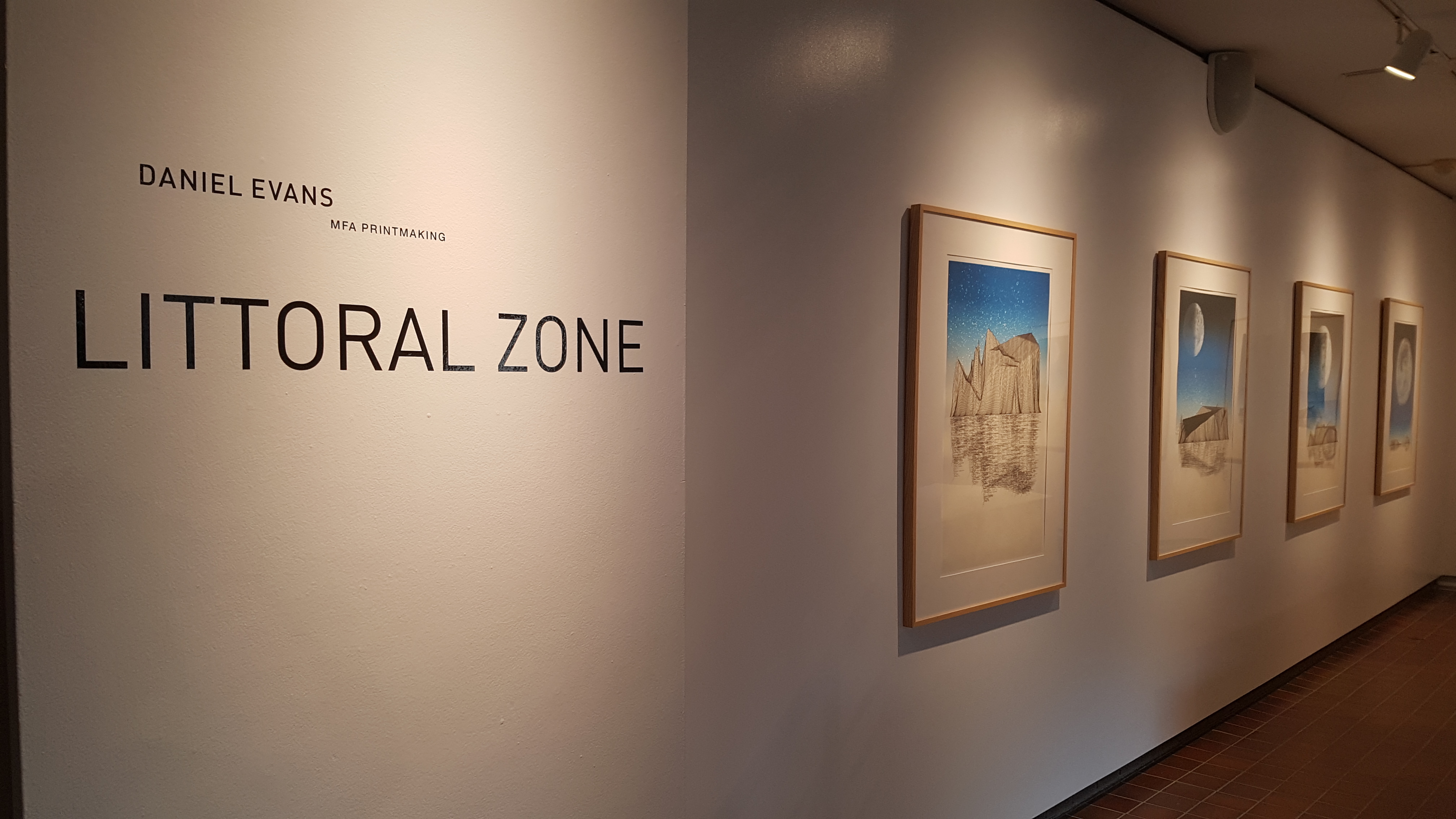Littoral Zone: turning active user data into works of art
Erik Einsiedel - 15 September 2020

In his latest art exhibit, Littoral Zone, MFA candidate Daniel Evans explores the ways our personal information is collected by countless digital platforms, and our relationship between that virtual world of data and the physical world.
Running until September 25, 2020 in FAB Gallery, Littoral Zone features a collection of original prints, 3D printed sculptures and virtual reality (VR). This unusual collection was created using half a decade’s worth of Evans’ own Google user data.
“I looked at the archive of data that Google has on me from the services I use, and I’ve reclaimed some of that material to create artwork out of it,” he says.
By “some of that material,” he means 90,000 pages of text, full of GPS coordinates like latitude, longitude and altitude — a complete record of where Evans was at any particular moment over the span of five years.
Combining his artistic background with his computer skills, Evans used that data to create 3D models of peaks and valleys that would become prints, sculptures, and a VR environment full of mountainous islands surrounded by water.
This melding of virtual and physical elements was the inspiration behind the exhibit name, Littoral Zone. In scientific terms, “littoral zone” refers to that part of a sea, lake or river that meets the shore, as can be explored in his VR landscape.
“I associate a digital space with water or an ocean, and the littoral zone being the overlap between physical and virtual,” Evans explains. “The term ‘littoral zone’ even has uneasy connotations in context of military surveillance.”
Evans further explores this visualization of data through the lens of the selkie folktales from British and other Northern European folklore. The selkie, a mythical shapeshifter who lives in the sea as a seal, can remove their seal skin and venture onto land in human form.
“I had the idea of using land to represent the physical world and the sea to represent a digital world, and the selkie was a being that could move freely between those things, but only by using their removable skin like an apparatus,” Evans says. “This says something about our relationship to the data we generate.”
According to folklore, if you steal the selkie’s skin, they can’t return to the sea, giving you power over them. Littoral Zone explores how we negotiate a similar relationship with our own data, and with the tech companies that collect it from us. It’s an engaging, interactive experience that Evans hopes will inspire people to think about the ways we relate to the data we generate.
Littoral Zone is on display in FAB Gallery until September 25, 2020, and can be seen by appointment only. For more information, visit the FAB Gallery website.